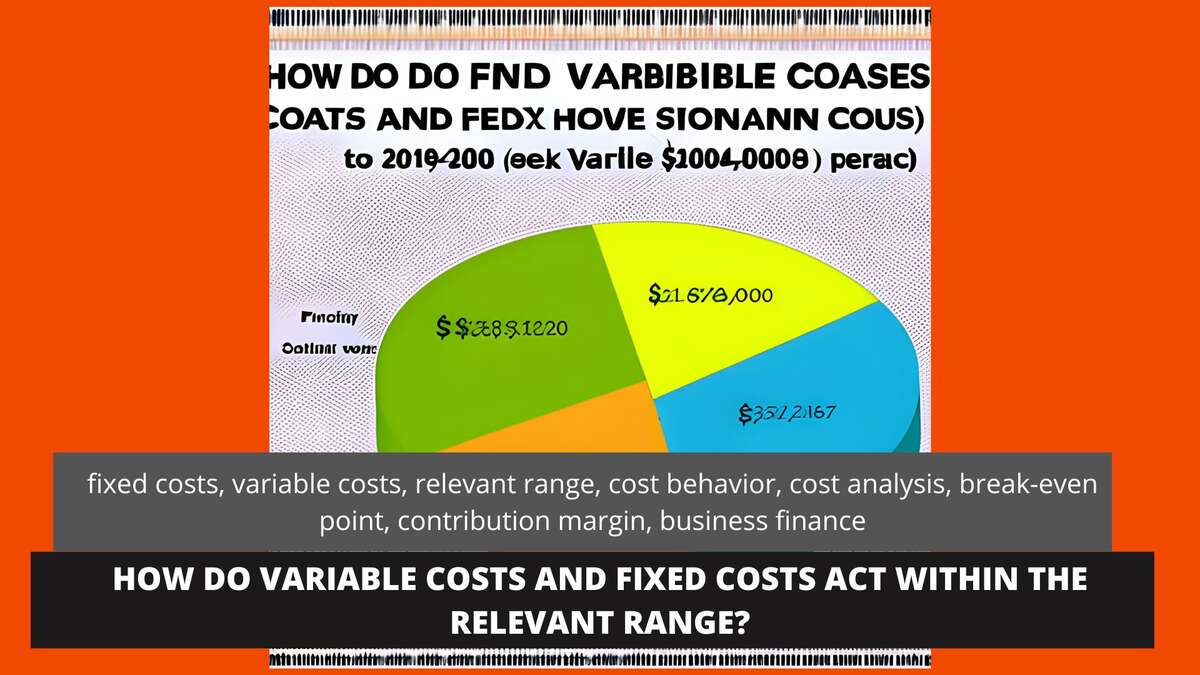When it comes to business finance, understanding the intricacies of cost structures is essential for making informed decisions. Two key components of cost structures are fixed costs and variable costs, and how they interact within the relevant range can greatly impact a company's financial performance. In this blog post, we will delve into these cost concepts and their implications on business decision-making. We'll also introduce useful tools, such as the Variable Cost Per Unit Calculator, Cost Per Unit Calculator, and Price Per Unit Calculator, to help you optimize your financial strategies.
Defining Fixed and Variable Costs
Before diving into the interaction of fixed and variable costs within the relevant range, let's first clarify the definitions of these key terms:
Fixed costs are expenses that remain constant, regardless of the level of production or sales volume. Examples include rent, salaries, and insurance.
Variable costs are expenses that change in proportion to the level of production or sales volume. Examples include raw materials, direct labor, and shipping costs.
Relevant range refers to the range of activity (e.g., production levels) within which the assumptions about fixed and variable cost behavior hold true. It represents the normal operating conditions of a business.
Understanding the Relevant Range
The relevant range is a crucial concept in cost analysis, as it allows you to make accurate predictions and decisions based on the behavior of fixed and variable costs. Within the relevant range, fixed costs remain constant, while variable costs change in direct proportion to the level of production or sales volume. However, when operating beyond the relevant range, cost behavior may no longer follow these assumptions, leading to inaccurate predictions and ineffective decision-making.
For example, a company may have a relevant range of 1,000 to 5,000 units produced per month. Within this range, the fixed costs of $10,000 per month and variable costs of $2 per unit will hold true. However, if the company tries to produce 7,000 units, it may incur additional fixed costs (e.g., renting extra space or hiring more employees) and experience changes in variable costs (e.g., bulk discounts on raw materials).
Fixed and Variable Costs Within the Relevant Range
When analyzing fixed and variable costs within the relevant range, it is essential to consider the following aspects:
- Break-even point: This is the point at which total revenues equal total costs, and the company neither makes a profit nor incurs a loss. To calculate the break-even point, use the following formula: Break-even point (in units) = Fixed costs / (Selling price per unit - Variable cost per unit).
- Contribution margin: This is the amount of money generated by each unit sold, after covering the variable costs, that contributes to covering fixed costs and generating profit. To calculate the contribution margin, use the following formula: Contribution margin per unit = Selling price per unit - Variable cost per unit.
- Operating leverage: This refers to the proportion of fixed costs to variable costs in a company's cost structure. Companies with high operating leverage rely more on fixed costs, while those with low operating leverage rely more on variable costs. Understanding your company's operating leverage can help you make strategic decisions about pricing, production levels, and cost management.
By understanding the behavior of fixed and variable costs within the relevant range, you can better manage your company's financial performance, identify opportunities for cost optimization, and make informed decisions about pricing, production levels, and investment.
Using Calculators for Cost Analysis
There are several online tools that can help you analyze fixed and variable costs within the relevant range, including the Variable Cost Per Unit Calculator, Cost Per Unit Calculator, and Price Per Unit Calculator. These calculators can help you quickly and accurately determine various cost-related metrics, such as break-even points, contribution margins, and operating leverage.
Using these calculators, you can input your company's specific fixed and variable cost data, production levels, and selling prices to generate insightful information that can guide your decision-making process. Furthermore, these tools can help you analyze different scenarios and make projections about the impact of changes in cost structures, pricing, and production levels on your company's profitability.
Conclusion
In summary, understanding the behavior of fixed and variable costs within the relevant range is critical for effective business decision-making. By analyzing your company's cost structures and using tools like the Variable Cost Per Unit Calculator, Cost Per Unit Calculator, and Price Per Unit Calculator, you can develop a comprehensive understanding of your company's financial performance and identify opportunities for cost optimization and strategic growth.
By incorporating these concepts and tools into your financial planning and analysis, you'll be better equipped to make informed decisions that can drive your company's success and profitability in the long run.
